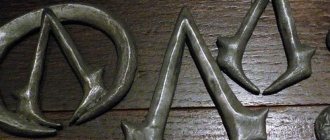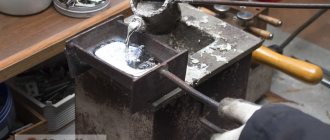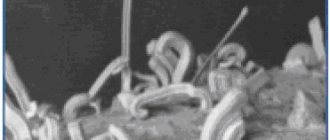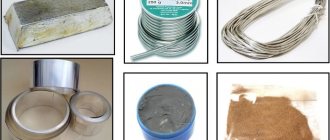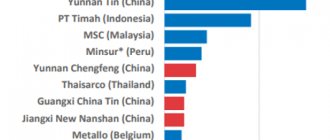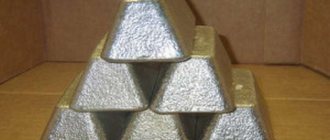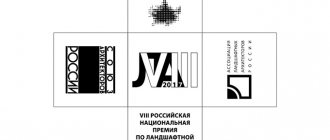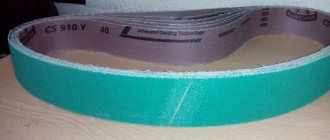Tin and its alloys
In the periodic table of Mendeleev, the light metal tin is designated by the symbol Sn. This substance is silvery-white, fusible due to its low melting point. It can be easily rolled into a thin layer of foil due to its ductility and plasticity. This substance is resistant to water and some acids. These properties make it possible to use tin for the production of many products.
This metal does not oxidize at normal temperatures, which makes it possible to use it for various protective coatings. But as an independent metal, tin is not used as often as its alloys. This is due to the fact that the latter can have properties an order of magnitude better than the pure metals that form this alloy. The combination of tin and copper is called bronze. It is one of the most commonly used tin alloys.
Deposits and distribution
Tin is in 47th place in abundance in the earth's crust among other metals. The sources of its production are cassiterite and stanine. The element occurs in nature in the following forms:
- Absent-minded. Isomorphically dispersed form, determined by similarity with oxygen compounds of niobium, tantalum, tungsten, with oxygen and sulfide compounds of chromium, manganese, scandium, vanadium, titanium;
- Mineral. Concentrator minerals containing iron. Thus, a high concentration of this metal is observed in garnets, epidotes, biotites, tourmalines, and pyroxenes.
The key mineral of tin, cassiterite (SnO2), contains more than 78% metal. Sn is distributed in Southeast Asia, West Africa, and South America. In Russia, the subsoil of the ore mineral is found in the Republic of Sakha, the Far East, and the southeast of Eastern Siberia. Deposits of stannine Cu2FeSnS4 are located in Central Asia and Primorsky Krai.
Scope of application of tin
Most often, tin is used as a protective coating. More than 40% of all tin is used for the production of tinplate containers, or rather for their tinning. This is the process of applying a given metal to the surface of a metal product to protect against corrosion. The anti-corrosion properties of tin also made it possible to use it for the manufacture of pipes. Light metal is also used in dentistry, for the production of dental fillings. Tin utensils were used even in ancient times, since they already knew about its stainless properties. But since this metal was expensive, such dishes never became popular in everyday life.
Processing Features
Tin processing involves grinding the mineral in special mills. The required particle size is 10 mm. After this, cassiterite is cleared of waste ore using the vibration-gravity method. Concentrated tin ore is smelted in a furnace with coal, where it is reduced to a free state. The result of the process is slag containing up to 25% tin. The resulting material is smelted at higher temperatures to produce metal that meets the established high standards.
The process is carried out under special control. This avoids large residues of valuable material in the slag after secondary processing.
The metal is polymorphic. Under normal conditions, it is white, plastic (β-modification), and has a density of 7.228 g/cm3. Cooled tin acquires a gray tint (α-modification). Its density is 5.75 g/cm3. The contact of two metals leads to the “tin plague” - their disintegration. The temperature effect on the material made it possible to obtain two more modifications of it (γ-tin - from 161 °C and σ-tin - from 1000 °C).
Applications of tin alloys
As stated earlier, alloys are more popular than tin itself. There are more than ten thousand of them. Industry consumes huge reserves of alloys every year. But for what? Additional properties useful in the production of products allow the alloys to be used in many areas.
Applications of tin alloys:
- Solder production. No industry can do without solders. For the production of solders, tin with cadmium, lead and bismuth are used. They are used for soldering various parts and workpieces, since such alloys are strong and fusible.
- Printing house. If we add antimony to an alloy of lead and tin, we get a material that is used to create fonts for printing.
- Automotive industry, aircraft manufacturing. Bearings of various sizes and various parts for cars and aircraft are made from an alloy of tin, copper, lead and antimony (babbitt). The babbitt alloy is characterized by good wear resistance.
- Decorative and applied arts. An alloy of tin and copper, bronze is used to create various sculptures and monuments. Bronze is not affected by environmental factors and is therefore considered a durable material that is excellent for such purposes.
- Shipbuilding, instrument making. Tin alloys, due to their anti-corrosion properties and mechanical resistance, are excellent for the production of parts that should not wear out quickly and lose the ability to perform their functions.
Undoubtedly, tin and its numerous alloys have very wide areas and applications. Use in medicine, the automotive industry, shipbuilding, instrument making, aviation, and decorative and applied arts make tin and tin alloys one of the most important elements in human activity.
Say a word about the poor tin
What metals are used in jewelry?
The most common answer: gold, silver, platinum. Sometimes it is also called copper, less often – brass. But there is one metal that is almost never remembered. This is tin.
For the past six years I have been making jewelry using tin as a metal. And the fact that he is placed in last place in this row, and often not placed anywhere at all, seems to me a great injustice that needs to be corrected as soon as possible. And now I will try to do this.
Tin is a wonderful metal in many ways. But since I deal with jewelry, I’ll first talk about it in that connection.
Someone may think that tin is something gray, dull, and completely uninteresting. This is not true - tin is a very beautiful metal. At the risk of arousing the wrath of “real jewelers,” I will undertake to assert that it is very similar to silver. So much so that sometimes the two metals cannot be distinguished.
For example, in these two photos there is silver and tin. Can you find out which metal is which?
(Kallie Schuchart)
(Anna F. Handmade jewelry)
These metals are, indeed, so similar that sometimes they don’t believe that my jewelry is not made of silver.
And in some ways, tin is even more interesting than silver. For example, when soldering, it forms very beautiful beads; it can be used to create a variety of textured surfaces; with a certain amount of manual dexterity, you can even draw with it.
(Anna F. Handmade jewelry)
(Maria Bulanova. Boho jewelry)
(Alina Glazunova)
Tin can be patinated in different ways - and it acquires the color of old noble silver, even quite ancient. And if you cover the patinated surface with an antioxidant, varnish, or jewelry wax, it also looks completely different and is also very beautiful.
(Anna F. Handmade jewelry)
(Anna F. Handmade jewelry)
(Maria Bulanova. Boho jewelry)
(Maria Bulanova. Boho jewelry)
And, of course, tin is noticeably cheaper than silver, which is also very nice.
There are also many different interesting things associated with tin.
For example, just when I started working with him, I learned about what a tin wedding is. And in fact, it is always touching and pleasant when, on the 10th wedding anniversary, a man orders his wife a tin ring, or some other piece of jewelry. Women, by the way, sometimes order it too, and then I always wonder if I liked it.
Everyone, of course, knows the fairy tale about the tin soldier. But not everyone knows that tin toys are still made today.
(Antique set of tin soldiers "The King's Musketeers")
(Knight figurine - modern master SK New Century (skwsu) And not only toys. For example, these glasses with a tin base. In my opinion, very beautiful.
(stanumcollection)
And before they made dishes, buttons, and a variety of household items.
This tableware was produced at the beginning of the last century at the German factory “Kaiser and Sons”, famous for its products made of tin.
(Kaiser and Sons)
(Kaiser and Sons)
(Kaiser and Sons)
But at some point, pure tin was practically stopped being used. Why? Erudite people will answer: the “tin plague” is to blame. This is when tin (pure, without impurities or additives) crumbles in the cold - it simply turns into a pile of gray powder.
For example, some historians associate Napoleon’s defeat near Moscow with this – the tin buttons of French soldiers crumbled in the cold.
The “tin plague” is to blame for the death of Captain Robert Scott’s expedition to the South Pole - the tanks soldered with tin leaked in the cold and all the kerosene leaked out.
But all these tragic incidents are a thing of the past: when people understood the chemical and physical aspects of this process, they stopped using pure tin.
Nowadays, tin is used mainly in alloys. But I will not touch on this topic - it is almost limitless. Let me just say that many of these alloys are absolutely non-toxic, hypoallergenic and generally harmless - so much so that they are used, for example, in the manufacture of food packaging.
And for the production of a wide variety of decorative items.
And, of course, tin (with small additions of copper or silver) can be used to create jewelry. What I am doing.
So, if you want something expensive and pretentious, these are precious metals; if it’s just beautiful, you can use tin))
(Anna F. Handmade jewelry)
(Maria Bulanova. Boho jewelry)
(Selena_artlab (SeLena48))
In general, if we put aside sad incidents from history, we can rightfully say that tin is an absolutely wonderful metal.
I hope that I was able to convince you of this.
Your Anna F.
Rules of care
Pewter can tarnish in humid environments and when exposed to salt or chlorinated water. Jewelry made from it should be removed before visiting the pool, sauna or bathhouse, or taking a shower. It is better to completely limit the contact of jewelry with water and store it in a dry, dark place.
Tin jewelry is resistant to strong impacts and scratches. They cannot withstand constant bending and break. Try to wear them very carefully. You can use a soft cloth to clean pewter jewelry. Jewelry cosmetics sold in retail stores are not suitable - only special pastes.
Gift from friends
The tenth anniversary of the wedding celebration is a wonderful holiday. Tin wedding anniversary gifts are given specifically for the tenth anniversary. Friends of a married couple most often give objects of common use:
- Paired wine glasses with metal elements . The decor is presented in the form of roses, doves and other symbols of marriage. A symbolic gift can also be used for its intended purpose.
- Pair of souvenir spoons made of tin . Handles are often designed in the form of a female and male silhouette.
- Tray complete with candy bowl, sugar bowl or cream container. It is appropriate to engrave with congratulations or wishes.
- Cup holders.
- Set of tin soldiers.
- Chess with figures cast from metal.
You should also consider options with metal decor.
- Tin bell for front door . Tin is always used in alloys to make bells. Thanks to this metal, the sound is very melodic. It is believed that the ringing of such a product protects the house from all negative energy.
- If you approach the choice of a gift with humor, you can buy a soldering iron with tin solder and, during the delivery, wish to instantly solder everything, even the smallest cracks that may appear in the relationship between spouses.
- Medal-congratulations on the first major date in the life of the newlyweds.
- Mirror in tin frame . A beautiful wall version of a mirror in a picture frame will be appreciated.
A beautiful mirror composition will be a wonderful reminder not only of the anniversary, but also of the giver
- Souvenir horseshoe . Depending on how exactly the horseshoe is positioned above the front door, it brings good luck or protects the house from ill-wishers.
- Metal panel . When choosing, you should give preference to options with romantic scenes, for example, images of a happy couple.
More important dates ! Find out what the couple celebrates on 27 years of marriage and what to give them.
How to determine whether it is tin or not?
Tin is much lighter and stronger than lead. To distinguish tin from aluminum (as well as from an alloy with lead), you should listen to the sound when bending the metal: pure tin always crunches. Unlike silver, tin melts much faster and also darkens when reacting with iodine.
Interesting materials:
What is the difference between Orthodoxy, Catholicism and Protestantism? How is the Orthodox cross different? What is the difference between a predicate and a statement? What is the difference between the preposition before and po? What is the difference between premium class and luxury class? What is the difference between freshwater pearls and cultured pearls? What is the difference between a criminal group and a criminal community? What is the difference between direct selling and alternative selling? What is the difference between live broadcast and live broadcast? What is the difference between Sentences and Zaklicheks?
Tools and materials for casting
Tin is almost an ideal material for casting in both domestic and industrial settings. What materials and tools will be needed to produce the mold and perform casting. To make the mold you will need sealant and plaster. The first will be used to make the equipment itself, and gypsum will be needed to make the frame into which the technological equipment will be installed.
Tin Casting Tools
In addition to the materials mentioned above, you will need simple metalworking tools - files with different sections, pliers, a soldering iron, etc.
Gifts for husband
Tin gifts for the stronger sex should have a practical purpose. A simple souvenir that will gather dust on a shelf in a closet is unlikely to be appreciated:
- Glass horn on a wooden stand . The product will take place on the mantelpiece or decorate the surface of the wall. The glass is decorated with a bas-relief with good detail. The cornucopia is presented along with wishes of prosperity and prosperity. It not only decorates the interior, but also symbolizes prosperity in the house.
- Belt buckle . For your beloved husband, you can find handmade items or designer options. It's also worth looking for vintage options.
Rare and interesting belt buckles can even be collected
- Pewter jewelry should be given as a gift if he wears it. The choice may fall on cufflinks or a tie clip . Priority is given to vintage options, or designer products made in a single copy.
- Stylish notepad with tin buckles . A good gift option for a man who works in an office. A business person will always find a use for an organizer.
- Beer mugs . Metal containers for beer with a bas-relief on the surface and an interestingly shaped handle will be used to their fullest advantage and will remind you of the holiday after a long time.
- Bottle holder . Sturdy design allows the bottle to be held slightly tilted. As a result, the cork does not dry out, which means it is stored longer. The wine plays beautifully in the rays of light, while maintaining all its qualities.
The stand will take its place in the closet or bar
- Pocket flask . Food-grade tin does not react with food and drinks, so it is often used to make tableware. Oxidation or corrosion processes also do not affect this material. The flask is packed in a velvet bag and equipped with a small watering can. This tin gift is ideal for fishermen, hunters and those who prefer an active lifestyle.
Another reason ! Find out what 18th anniversary is celebrated and what to give.
From the history
According to historians and archaeologists, tin was first discovered, most likely by accident, in alluvial deposits of cassiterite. Ancient furnaces containing waste slag have been found in the south-west of Great Britain. Among the discovered objects from the era of Ancient Rome and Greece, tin items are very rare, which confirms the assumption that this metal was expensive.
Tin is mentioned in works of Arabic literature of the 8th-9th centuries, as well as in medieval works describing travel and great discoveries. In Bohemia and Saxony, tin began to be mined in the 12th century.
It is interesting that long before people began to mine pure tin, they invented bronze - an alloy of tin and copper. According to some sources, bronze was known to man as early as 2500 BC.
The fact is that tin exists in ores together with copper, so when smelting they obtained not pure copper, but its alloy with tin, that is, bronze. Tin can be found as an incidental impurity in copper utensils of the Egyptian pharaohs made in 2000 BC.
